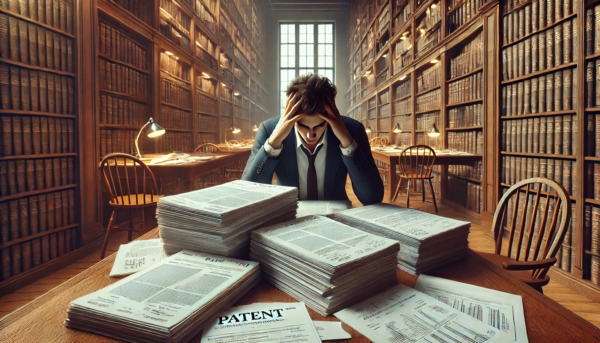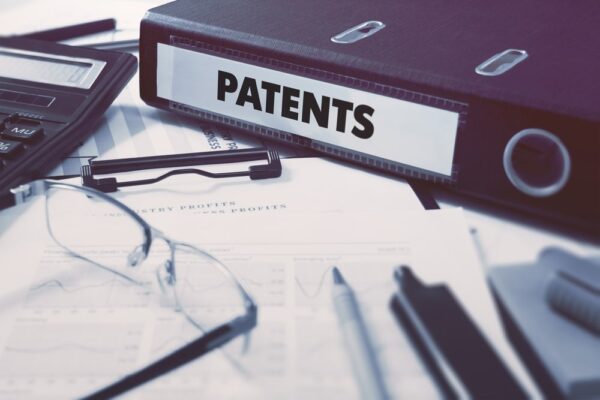
Prior art is evidence that an invention was publicly known before the filing date of a patent application. It can be in many forms, such as existing patents, written publications, videos, and other forms of public disclosure. Prior art matters because if it is sufficiently similar to an invention, it can render the invention unpatentable. Grasping the concept of what is prior art is and how it affects patentability is essential for understanding what can be patented. This article will explore various types of prior art and the role of prior art in the patent examination process.
To truly grasp the significance of prior art, we must first define it under U.S. law. According to federal statute 35 U.S.C. § 102, as amended by the America Invents Act, prior art encompasses any evidence that an invention was known or available to the public before the effective filing date of a patent application. Any public disclosure of the invention before the filing date can challenge its originality, novelty, and patentability.
The timing of public disclosure is crucial. For a public disclosure to qualify as prior art, it must have been disclosed or available to the public before the filing date of a patent application. Information disclosed after this date does not qualify as prior art. This emphasizes the importance of filing a patent application promptly to avoid potential conflicts with third party disclosures. In other words, you want to beat competitors and other parties to the punch. However, in the case of a previously filed patent application, it may qualify as prior art even if it is not publicly available. The prior filed application can still qualify as prior art if it was filed before the new application.
Prior art is the basis upon which the United States Patent and Trademark Office determines patentability. There are two analyses that the patent office conducts in view of the prior art: whether the claimed invention is novel and whether the claimed invention is non-obvious. The novelty and non-obvious requirements are discussed below.
Under U.S. patent law, the novelty requirement ensures that an invention is new and has not been disclosed in prior art before the patent application’s filing date. This requirement is codified in 35 U.S.C. § 102, which outlines the conditions under which an invention is considered novel.
An invention lacks novelty if it is anticipated by a single prior art reference, meaning every element of the claimed invention is disclosed, either explicitly or inherently, in that reference. The all-elements rule for anticipation under U.S. patent law requires that a single prior art reference disclose each and every element of a claimed invention to invalidate the claim for lack of novelty. If even one claimed element is missing from the reference, the claim is not anticipated. The rule is grounded in the principle that anticipation requires the invention to have been fully disclosed in a single reference so that it is not truly "new". This rule generally applies in other national patent offices as well.
Section 102 changed between pre-AIA (America Invents Act) and post-AIA frameworks. Under the pre-AIA framework, novelty is determined based on whether the invention was known, used, or described in a printed publication or patented in the U.S. or abroad before the date of invention. However, the AIA, effective March 16, 2013, shifted US patent law to a "first inventor to file" system, where the relevant date is the filing date rather than the invention date. The US is thus a first-to-file system and prior art is evaluated based on whether it pre-dates the earliest filing date of the patent application.
The non-obviousness requirement under U.S. patent law ensures that an invention is not only new but also represents a meaningful technical advance that would not have been obvious to a person of ordinary skill in the art at the time the patent application was filed. This requirement is codified in 35 U.S.C. § 103, which states that a patent cannot be obtained if the differences between the claimed invention and prior art would have been obvious to someone skilled in the relevant field.
The landmark case Graham v. John Deere Co., 383 U.S. 1 (1966), established the framework for evaluating non-obviousness, known as the Graham factors. These include: (1) determining the scope and content of the prior art, (2) assessing the differences between the prior art and the claimed invention, (3) understanding the level of ordinary skill in the art, and (4) considering secondary factors such as commercial success, long-felt but unresolved needs, and failure of others.
In KSR International Co. v. Teleflex Inc., 550 U.S. 398 (2007), the Supreme Court emphasized a flexible approach to obviousness, in which the Court emphasized that a combination of prior art references or the knowledge of one of ordinary skill in the may render an invention obvious if there is some articulated reason or motivation to make such a combination that existed prior to the filing date of the application.
Non-obviousness serves to prevent patents on trivial or routine improvements, ensuring that the patent system rewards only innovations that include a genuine inventive step while maintaining a competitive market for incremental advancements easily within the grasp of skilled practitioners.
Prior art encompasses various forms of information relevant to the patentability of an invention. It is not limited to existing patents and products. Beyond existing patents, prior art can include public disclosures, scientific papers, technical journals, and any other forms of literature that provide relevant information before the filing date of a patent application. Identifying prior art from this wide array of sources can be complex and painstaking. To find the relevant prior art, a diversity of sources must be searched.
Printed publications are prior art under 35 USC 102(a)(1). Specifically, a person is not entitled to a patent if the claimed invention was described in a printed publication of any kind (e.g., a patent, journal article, blog post, product description on a website, etc.), or in public use (e.g., a device used in an open or public manner by the inventor), on sale (e.g., a product that is available to the public), or otherwise available to the public before the effective filing date of the claimed invention. Printed publications must be publicly accessible, such as being indexed in a library or available online, to qualify as prior art under § 102(a)(1).
Previously filed patents and published applications qualify as printed publications under 35 USC 102(a)(1). They are reliable references for the state of the art at the time of filing and are typically the primary source of prior art for the patent office in the patent examination purposes.
Under 35 USC 102(a)(2), issued patents and published applications are considered prior art if they existed before the effective filing date of a new invention. Thus, there are situations where material that was unpublished at the time your patent application is filed that can serve as prior art to your invention. Thus, prior art searches cannot be certain to uncover all relevant prior art. However, it is still of great importance to conduct a thorough prior art search prior to filing a new application.
Non-patent literature, such as scientific papers, articles, and technical journals, are also prior art if they are sufficiently thorough and complete in describing the invention. If publicly accessible and providing relevant information before the filing date, these documents can serve as prior art. This type of literature must be searched for and considered in assessing the patentability of an invention.
Various forms of non-patent literature, including research articles and technical papers, can significantly impact the patentability of an invention. By providing a wealth of information on existing technologies and innovations, these documents can help patent examiners determine whether a new invention is truly patentable.
Public disclosures, such as presentations at trade shows, conferences, and other public events, can be deemed prior art if they disclose an invention to the public before the filing date of a patent application. Any public presentation, lecture, or event revealing the invention can impact its patentability.
These public disclosures can significantly affect the assessment of originality of an invention claimed in a patent application. By making information publicly accessible, such disclosures provide a basis for patent examiners to compare the claimed invention against existing knowledge and determine its novelty and non-obviousness.
A sale of an invention prior to filing a patent application can create prior art, barring patentability under 35 U.S.C. § 102(a)(1). An invention offered for sale by a third party prior to the filing of the application or by the applicant more than one year before the application filing date is considered prior art.
Although many types of information can be considered prior art, some categories do not qualify. Non-enabling publications, for instance, cannot be classified as prior art if they do not provide sufficient description of the invention to enable someone of ordinary skill in the relevant field to replicate the invention. In other words, vague or incomplete disclosures are not considered prior art.
Unpublished patent applications, trade secrets, and publications that are not accessible to the public at the time of filing are not considered prior art because they remain undisclosed and unavailable for public scrutiny. Understanding what is not considered prior art is just as important as knowing what is.
There are also exceptions to what would otherwise be considered prior art. For instance, under 35 U.S.C. § 102(b) certain disclosures are not deemed prior art if the subject matter disclosed was obtained directly or indirectly from the inventor or if subject matter disclosed by a third party had previously been publicly disclosed by the inventor before the effective filing date.
A thorough prior art search is crucial for identifying existing inventions that may affect the novelty of a new patent application. This process involves systematically searching through various sources of prior art to ensure that the invention is truly novel and non-obvious.
Structured approaches and effective strategies can significantly increase an inventor’s chances of securing granted patents. A patent search can also identify potential patent infringement issues that should be considered before pursuing a patent and providing a new product or service.

Patent databases like USPTO enable efficient searches of both issued patents and pending applications. The USPTO’s Patent Public Search tool offers a tool to access US Patent prior art. Other publicly available tools, such as Google Patents, Espacenet, and Free Patents Online can also be used to search for patent documents. Utilizing patent citation data can enhance searches by connecting related patents and identifying previously referenced prior art. Additionally, Global Dossier tools provide access to file histories of related applications across international patent offices, offering a more in-depth understanding of prior art and its implications.
Patent attorneys, with their expertise in navigating complex patent databases, can advise on search strategy. Their knowledge and experience ensure thorough and effective patent searches, providing a solid foundation for the patent application process. Comprehensive prior art searches require refined search techniques. Experienced patent attorneys thoroughly understand the patent search databases offered by the USPTO, EPO, and others and are adept at using them.
Patent attorneys can help ensure that the pertinent prior art is identified and accounted for in the patent application process. They can enhance the quality of the prior art search and provide expert analysis of the findings, ensuring thorough and effective searches. Attorney analysis of the search results can provide valuable insights into the patentability of an invention.
Patent examiners use prior art as a reference point to evaluate the claims of an invention against established knowledge and technology. The examination process compares the claimed invention in a patent application with relevant prior art to determine if the invention is novel or previously disclosed. This ensures that the invention meets the legal requirements for patentability, including novelty and non-obviousness.
The examiner's process includes finding prior art in the same field covering related technologies and comparing this prior art to the claimed invention to determine whether one of ordinary skill in the relevant art would find the invention novel and non-obvious. The patentability of the invention depends on the degree of difference from existing art. This process underscores the importance of a thorough prior art search to identify potential prior art problems and assess the patentability of the invention before the examiner conducts their search and analysis.
Mitigating risks associated with prior art is essential for successful patent applications. Conducting early searches, continuous monitoring, and effective disclosure management can significantly enhance the chances of securing a patent and protecting intellectual property.
Conducting prior art searches early helps identify potential obstacles to patentability before significant time and resources are invested in development. An effective prior art search requires a systematic approach, including identifying relevant databases and keywords.
Consulting with a patent attorney can provide valuable insights and expertise to ensure that prior art searches are thorough and effective. Their knowledge of patent law and search techniques can help uncover potential conflicts and guide inventors towards successful patent applications.
Continuous monitoring of new publications and patents can keep you competitive and informed. Patent databases and online alerts efficiently track relevant patents and publications, ensuring inventors stay aware of new developments that may affect their inventions.
Routine checks of academic journals, patent databases, and industry news can result in more informed decision-making and provide a competitive edge in the market.
Managing public disclosures properly is vital to maintain the potential for patentability in future applications. Strategic management of public disclosures protects the patentability of inventions by minimizing unintentional prior art creation by disclosure of your own technology. Once you disclose your own invention in a public manner, there is a 12-month grace period in the US for filing a patent application for the invention. If you fail to file within that 12-month grace period, your invention becomes public domain and can be practiced by anyone without a license or permission. In some other countries, the grace period is shorter or there may be no grace period at all. Also, premature sharing of ideas that evolve into an invention could compromise patentability of that invention. You need a confidentiality process and policy to avoid unintentional disclosures that may affect the patentability of your inventions down the road.
It is critical for innovators to understand prior art and how it factors into the patentability of an invention. If you are an inventor or you have a business that is actively innovating, you need to be aware of the role of prior art. If you need assistance with assessing the patentability of an innovation or any other patent matter, contact our office for a free consultation.
© 2025 Sierra IP Law, PC. The information provided herein does not constitute legal advice, but merely conveys general information that may be beneficial to the public, and should not be viewed as a substitute for legal consultation in a particular case.

"Mark and William are stellar in the capabilities, work ethic, character, knowledge, responsiveness, and quality of work. Hubby and I are incredibly grateful for them as they've done a phenomenal job working tirelessly over a time span of at least five years on a series of patents for hubby. Grateful that Fresno has such amazing patent attorneys! They're second to none and they never disappoint. Thank you, Mark, William, and your entire team!!"
Linda Guzman

Sierra IP Law, PC - Patents, Trademarks & Copyrights
FRESNO
7030 N. Fruit Ave.
Suite 110
Fresno, CA 93711
(559) 436-3800 | phone
BAKERSFIELD
1925 G. Street
Bakersfield, CA 93301
(661) 200-7724 | phone
SAN LUIS OBISPO
956 Walnut Street, 2nd Floor
San Luis Obispo, CA 93401
(805) 275-0943 | phone
SACRAMENTO
180 Promenade Circle, Suite 300
Sacramento, CA 95834
(916) 209-8525 | phone
MODESTO
1300 10th St., Suite F.
Modesto, CA 95345
(209) 286-0069 | phone
SANTA BARBARA
414 Olive Street
Santa Barbara, CA 93101
(805) 275-0943 | phone
SAN MATEO
1650 Borel Place, Suite 216
San Mateo, CA, CA 94402
(650) 398-1644. | phone
STOCKTON
110 N. San Joaquin St., 2nd Floor
Stockton, CA 95202
(209) 286-0069 | phone
PORTLAND
425 NW 10th Ave., Suite 200
Portland, OR 97209
(503) 343-9983 | phone
TACOMA
1201 Pacific Avenue, Suite 600
Tacoma, WA 98402
(253) 345-1545 | phone
KENNEWICK
1030 N Center Pkwy Suite N196
Kennewick, WA 99336
(509) 255-3442 | phone
2023 Sierra IP Law, PC - Patents, Trademarks & Copyrights - All Rights Reserved - Sitemap Privacy Lawyer Fresno, CA - Trademark Lawyer Modesto CA - Patent Lawyer Bakersfield, CA - Trademark Lawyer Bakersfield, CA - Patent Lawyer San Luis Obispo, CA - Trademark Lawyer San Luis Obispo, CA - Trademark Infringement Lawyer Tacoma WA - Internet Lawyer Bakersfield, CA - Trademark Lawyer Sacramento, CA - Patent Lawyer Sacramento, CA - Trademark Infringement Lawyer Sacrament CA - Patent Lawyer Tacoma WA - Intellectual Property Lawyer Tacoma WA - Trademark lawyer Tacoma WA - Portland Patent Attorney - Santa Barbara Patent Attorney - Santa Barbara Trademark Attorney